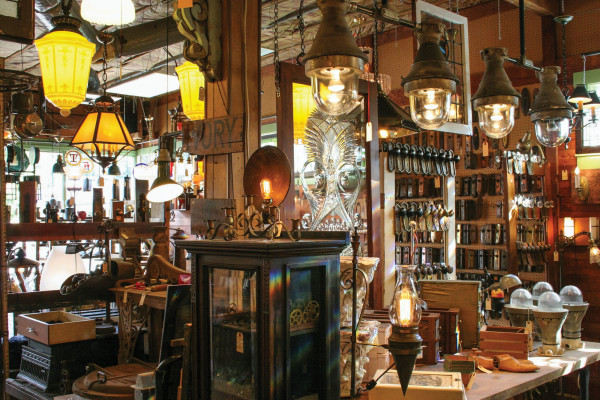
Architectural salvage shops abound in cities with old housing stock. This is a peek inside Old Portland Hardware, one of several architectural antiques dealers in Portland, Oregon.
Courtesy of Old Portland Hardware
I did not participate in the Dumpster-diving days of the 1970s, but over the years I’ve picked up my share of architectural treasures from salvage dealers, antiques shops, eBay, mega-flea markets, and even a curb or two. All of these sources remain great places to search for items that help restore character to a historic house. Since I bought my first one—a 1942 Cape Cod in North Carolina, where the first bit of salvage was a bottom-of-the-line Norge dishwasher picked up by my father— the salvage world has grown, changed, and matured in astonishing ways.
Walk into a long-time architectural salvage shop and you will find hardware, lighting, structural elements such as doors and newel posts, and furniture neatly arranged in curated galleries that border on posh. Prefer to do your shopping online? Elements are presented by category, along with mini-catalogs of recent additions. That’s where I saw a ca. 1880 Baroque Revival mahogany staircase and matching newel post in a carefully removed single piece at Eron Johnson Antiques, an architectural antiques dealer who specializes in such high-end finds. On the lower end, if only original hardware will do for a transom restoration, you can find those bits and pieces for a song on eBay.
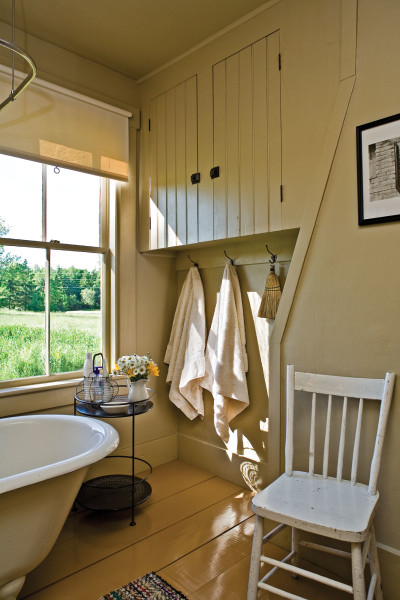
As part of a re-creation of a 1930s-era bath in what had been a pantry, the rolled rim tub in this 1893 Foursquare was relocated from another part of the house.
Design by Fine Artist Made
As you might imagine, the internet has brought us more ways than ever to find architectural salvage—with sources from all over the world as well as your own neighborhood. It’s possible to locate half a dozen sets of ca. 1915 passage-door hardware, or the perfect Magic Chef kitchen range from the 1940s, or a true gaslight chandelier, all by using your laptop or smart phone. That said, it’s tougher to find certain authentic fittings and materials, especially for houses built before 1900. (That magnificent Baroque Revival staircase came from Buenos Aires.) Even when you do find that elusive gaslight chandelier, it’s likely to cost thousands of dollars rather than hundreds, and you’ll be competing against high-end collectors, interior decorators, architects, and prop masters as well as fellow restorers. In a word, salvage has become . . . sophisticated.
An increasingly discerning market for architectural antiques means there’s a shrinking supply of certain styles. A good number of salvage dealers now replicate hard-to-find items, including Vintage Hardware & Lighting in Port Townsend, Washington, and Rejuvenation in Portland, Oregon. Patterned on actual artifacts, the reproductions tend to be accurate representations.
Pro tip: A Golden Rule Original fixtures, cabinetry, hardware, beams, paneling, and other built-ins in good condition should never be demolished or thrown away. Move and reuse them elsewhere in the house, store them in the basement or attic for future owners, or sell or donate them to a reputable architectural salvage dealer or reuse center.
Other salvage dealers stock brand-new fittings along with the salvage, one being Historic Houseparts in Rochester, New York, or they import high-end items including Gallé-style glass chandeliers or complete mahogany and zinc bars from Europe, an example being Architectural Antiques Exchange in Philadelphia.
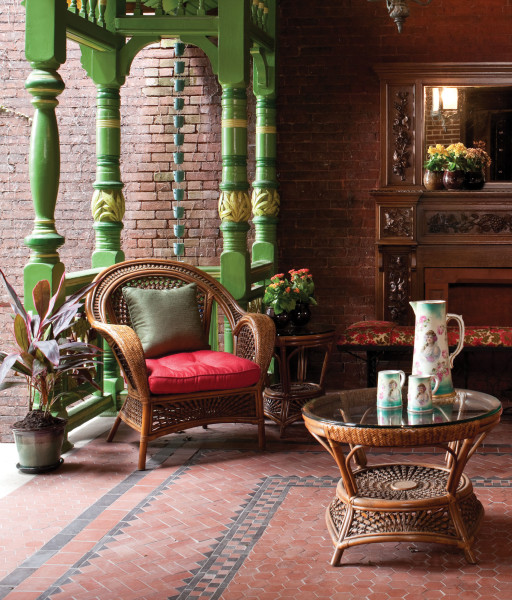
On the back of a town-house in Pittsburgh, this whimsical gingerbread porch replaced the original that was removed during the 1960s. Massive turned posts support an ornamented gable—all of it salvaged when an 1884 mansion was being demolished just down the street.
William Wright
Many dealers give you the option of buying an item in as-is condition, but others offer refurbishment as a matter of course. Light fixtures, hardware, bath fixtures and fittings, grilles and other metalwork, fancier doors and windows, and smaller items are all candidates for in-house makeovers. Furthermore, some dealers create new work from old parts.
“We’ve made occasional tables with copper and tin tops—beautiful patina—out of old farmhouse boiler pots and tin ceilings,” says Don Short, the preservationist who owns West End Architectural Salvage in Des Moines, Iowa. “We’ve got raw salvaged goods on four floors in our 50,000 sq. ft. warehouse,” he explains, “but we also fabricate. Live-edge slabs from downed trees are popular for dining tables.” Short and his crew assist guests with design, and operate a coffee shop and bar in the store, renting the space for receptions and fundraisers. Today’s dealers are not the salvage yards of old.
Before you blow the budget on items that tickle your fancy, take inventory of what’s missing (or beyond saving) in the house. Do a thorough search of attic, basement, and cubbyholes where anything larger than a toaster could be hidden. OHJ readers thus have found 1910 kitchen cabinets, late-19th-century chestnut flooring, 1890s stained-glass windows, pocket doors nailed inside walls, and Arts & Crafts light fixtures gathering dust—stashed away back in the days where no one ever threw out anything of value.
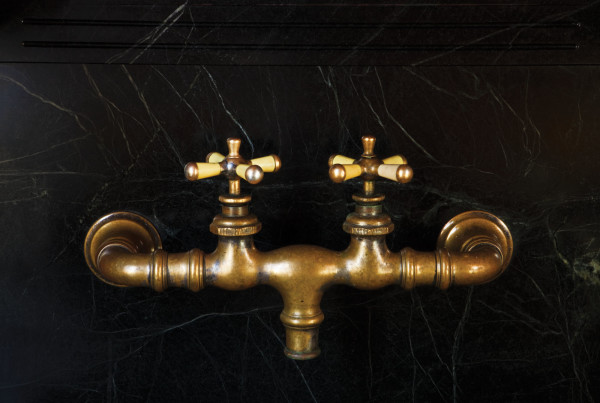
Salvage is unique: You can’t buy a reproduction of this rebuilt antique faucet, which joins other rescued fittings in the kitchen of an 1884 Queen Anne house.
Blackstone Edge
If the house needs extensive restoration and you’ll be working with a designer or architect, try to find one experienced in using historic building materials as part of the work. These pros are often gifted at incorporating “found” period materials such as plumbing fixtures, original doors, and period beams and flooring as part of the restoration. Reusing structural materials or even a bathtub means taking extra care as walls are opened up and old materials are ripped out—a process that requires “forensic demolition.”
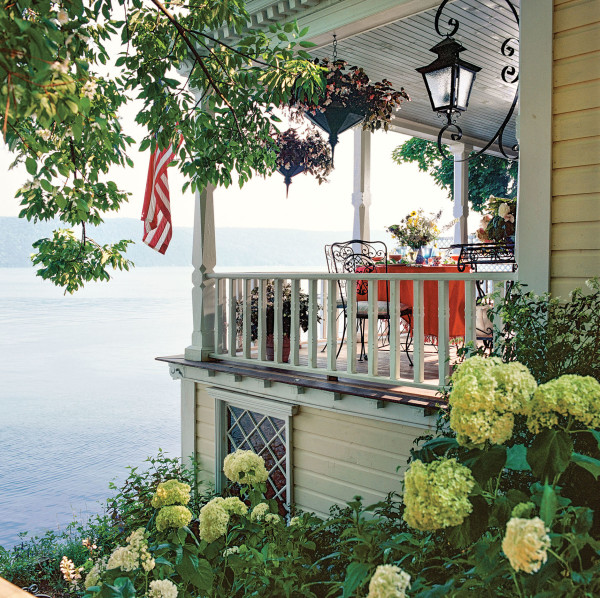
The all-new porch for a 1900 Dutch Colonial was built using salvage parts, including the turned and chamfered posts.
Gross + Daley
Owners and designers are thoughtfully and subtly placing salvaged materials into renovated spaces, and even new construction. It’s possible to have kitchen cabinets built from reclaimed wood, for example, or to transform a freestanding glass cabinet found at auction into a period built-in in a house of a similar era, with adjustments in millimeters rather than inches.
Cast a wide net. Keep in mind that most architectural salvage dealers have a far greater (and changing) inventory than what they show online. Call or email dealers with specific requests. Send pictures of items you seek, especially if looking for multiples, or a missing fitting such as a ceramic cross handle, or specific types of light fixtures, or arcane hardware. “Builder” fittings of the 1920s and later can generally be found anywhere in the United States, but if your home is unique or was built before 1860, regional sources may be a better place to start. Don’t overlook local auctions, a good source for items that were removed from older homes.
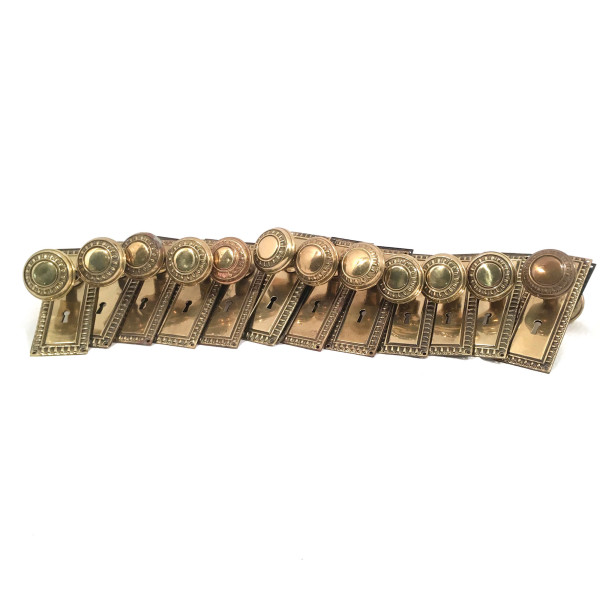
Finding multiple matched passage sets, like these vintage egg-and-dart beauties recently available at Ohmega Hardware (there are 12), is rare.
Sandy Agrafiotis
Lighting & Hardware
Outfitting an old house that’s missing original light fixtures or passage hardware can be like looking for needles hiding in a haystack. Consider that sconces were routinely mounted in pairs, and that the exposed parts of a single passage set consists of two back plates or rosettes and two knobs or levers, not to mention the spindle and fasteners. Since even a modest-size house might have eight passage doors, that’s a lot of parts to find in a single place, or even several. Many people opt for reproductions when many similar pieces are needed.
Occasionally, pairs of matched chandeliers turn up on architectural salvage sites—as do multiple passage sets—but how often are they exactly what you’re looking for? Even if the style and period of the light fixture is dead-on, the scale and size may not be quite right. Condition is another issue. Old hardware may be functional, but the finish may be discolored, rusty, or simply not the patina you had in mind. Without exception, vintage lighting should be rewired to meet modern safety codes—a service most architectural salvage dealers perform as a matter of course (or should).
Plumbing Fixtures
> Authentic, vintage plumbing fixtures are so popular that porcelain-enameled cast-iron sinks and tubs are increasingly sold in refurbished, near-mint condition—factory-condition resurfacing has already been done for you. Some sinks and tubs are offered as complete sets with refurbished, rebuilt, or even replated faucets, or with new period-look fittings.
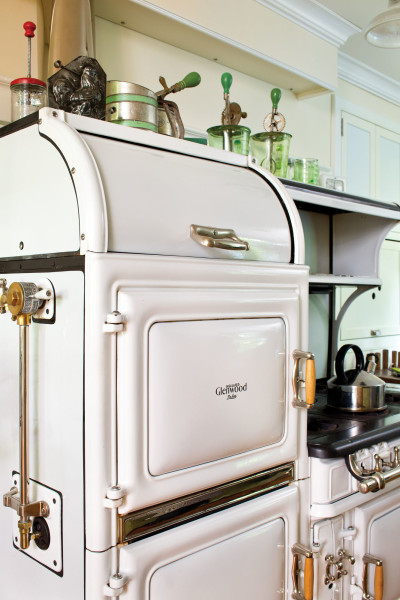
The six-burner, two-oven Glenwood SNJ was restored by Erickson’s Antique Stoves.
Appliances
With effort and expertise, salvaged ranges and refrigerators can be returned to safe operating condition, either with minor touchups if the appliance is already in (power company-certified) working condition, or with a major overhaul if it’s been sitting in someone’s garage. (Note that the cost of a full restoration is usually several times the cost of an unrestored appliance.) It’s essential that all wiring, power connections, thermostats, and pilot lights are brought up to code and properly calibrated. A good restorer (see Resources, p. 102) will take apart gas valves and thermostats on a range, or compressors and condenser coils on a fridge, then clean, inspect, and reassemble or replace the parts. Interior elements including door gaskets, wall panels, and door liners can be updated or replaced with custom elements. Ranges can be converted from solid fuel to propane or natural gas, or from gas to electric, as examples. Similarly, decorative and functional metalwork, knobs, and interior shelving should also get a sensitive brush-up. Worn lettering on controls can be repainted, metalwork polished and buffed or professionally replated.
Sketch & Measure: Besides a wish list, you’ll need a few simple tools when you shop for architectural salvage, especially for building components like doors or cabinets. Always carry a tape measure—an 8′ steel tape like the ones carpenters use is a practical size—along with measurements for the areas you’re trying to fit. (This goes for auctions, too.) If you’re shopping for metal items, a magnet can help you determine if there’s any iron content under that peeling paint. (Magnets don’t stick to brass, bronze, tin, zinc, copper, lead, nickel, or aluminum.) If you want to incorporate salvage into an entire room or addition, bring your architectural drawings or room measurements, along with photographs.
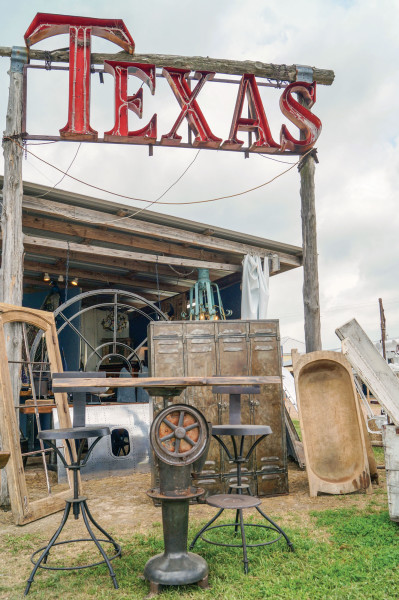
Courtesy Original Round Top Antiques Fair
Big Flea Markets
One often-overlooked source of salvage: those sprawling, destination antiques fairs that take place two or three times a year, usually within easy driving distance of a major metropolitan area. Thousands of dealers offer every imaginable type of vintage goods and ephemera. Architectural treasures ranging from stained glass and historic lighting to 14′-long Edwardian bars with zinc countertops pop up amidst old wardrobes and decorative jelly jars. Since salvage is a hot trend with designers, architects and other pros, you should arrive early to take advantage of the best deals. (Bring cash.) “You have to get there exactly when the dealers you buy from open,” says interior designer Carisa Mahnken, a long-time shopper at Brimfield. Most of her client-project shopping is finished just an hour after she arrives. Three of the largest:
1. Adamstown, PA Home to thousands of dealers, this town 60 miles west of Philadelphia is the site of multi-day “extravaganzas” in April, June, and September and an outdoor market on Sundays year-round. antiquescapital.com
2. Brimfield, MA The granddaddy of all outdoor venues, Brimfield—with 20,000 dealers participating three times a year in May, July, and September—is quite possibly the largest open-air antiques show in the world. Plan to spend at least a couple of days in the area to take advantage of both early-bird shopping and last-minute deals. brimfieldshow.org
3. Round Top, TX Celebrating its 50th year, this Texas-size show is really more than 60 events spread out over half a dozen towns around the historic German settlement of Round Top (population 90) mid-way between Austin and Houston. Shows take place in October, January, and September/October. roundtoptexasantiques.com
Click here to find more architectural salvage stores near you.







